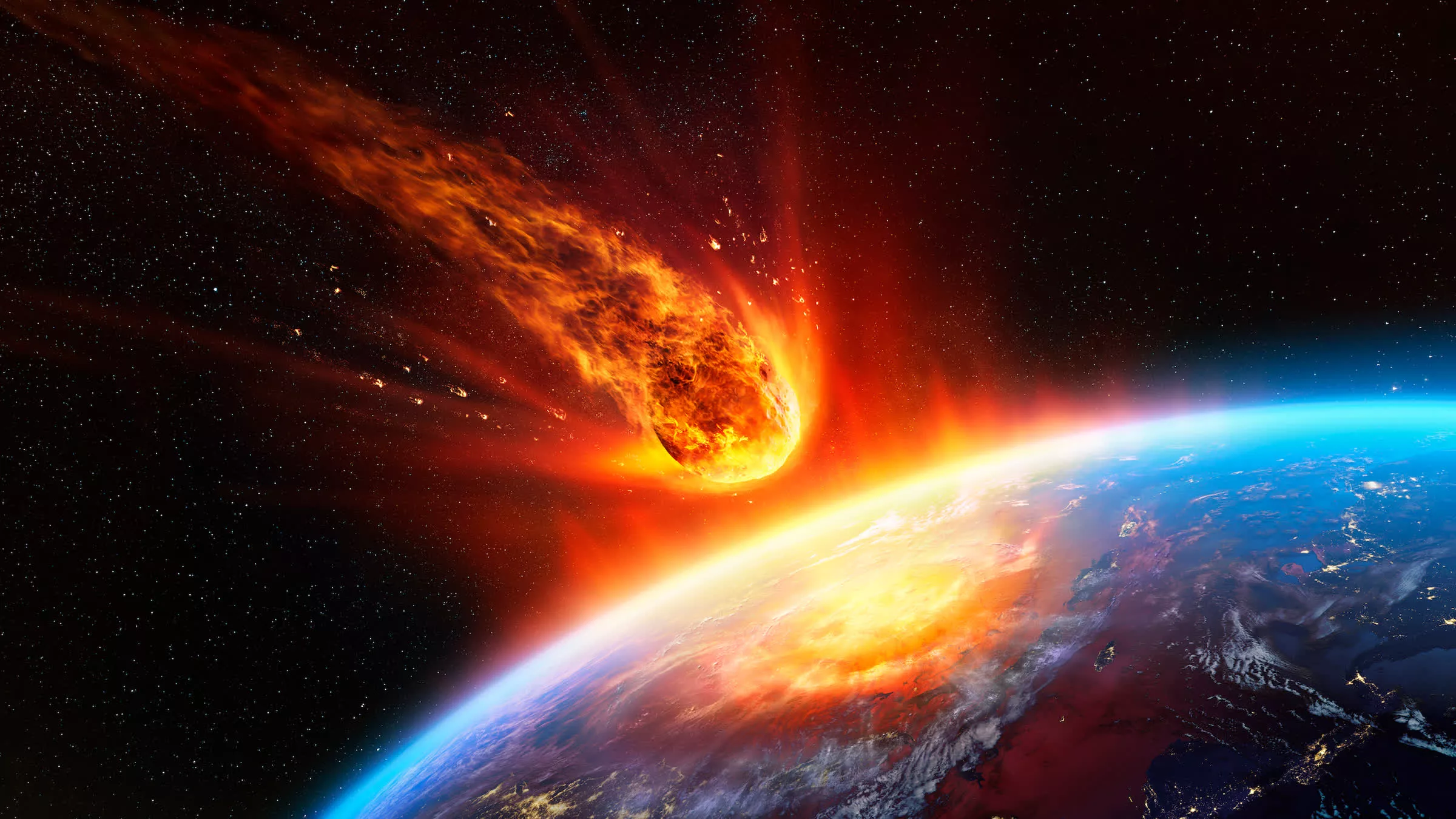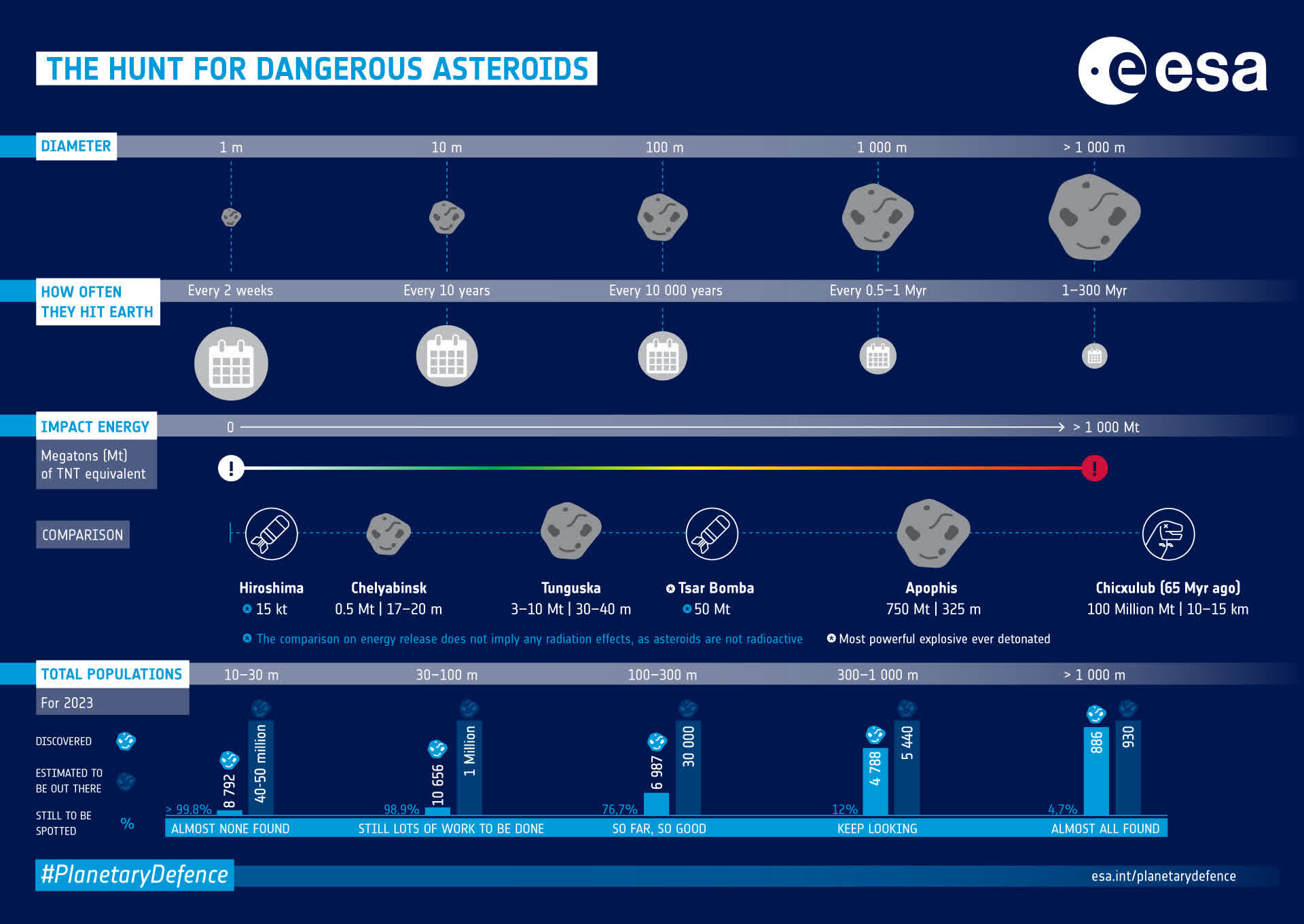In brief: If a massive asteroid were going to hit Earth, would it be better not to know about it until the object was lighting up our sky? We almost found out last week when a 200-foot object made a relatively close passing of our planet, something scientists didn't know about until 2 days later.

Astronomers at the Atlas Observatory in South Africa first spotted 2023 NT1 on July 15, two days after making its closest approach to Earth. The asteroid entered a 60,000-mile radius of the planet – about 1/4 the moon's distance to Earth.
Newly-discovered #asteroid 2023 NT1 passed about 1/4 the Moon's distance on July 13, but wasn't discovered until July 15, as it approached Earth in the daytime sky. It may be as large as 60 meters across, possibly larger than the asteroid that caused Meteor Crater in Arizona. pic.twitter.com/VLXB4ChTMJ
– Tony Dunn (@tony873004) July 16, 2023
We're usually aware of any potentially hazardous space objects long before they get close to our planet. Asteroid 1994 XD, which is between 1,214 to 2,723 feet in diameter, came as close as 1.96 million miles to Earth last month. It was discovered by the Spacewatch group at Kitt Peak Observatory in Arizona in 1994.
Asteroid 2023 NT1 was different, though, as it traveled toward us from the sun and thus was hidden by the star's glare. This was the same reason why nobody spotted a 20-meter (65-foot) asteroid in 2013 until it exploded over the Russian city of Chelyabinsk in 2013, sending out a shockwave that injured 1,500 people and damaged buildings.
NASA defines asteroids with 2023 NT1's dimensions as airplane-size. A quick look at the ever-ominous Asteroid Launcher website and picking New York as an impact point shows that the object's size and speed (11.28 km per second) would leave a 225-meter (738-foot) crater. Around 235 people would be vaporized and a 328-foot-tall tsunami would be created. That's just an estimate: the asteroid that hit Arizona 50,000 years ago was a little smaller than 2023 NT1 at 160 feet but created the 3,900-foot diameter Barringer Crater.
In an attempt to avoid future situations like these, the European Space Agency (ESA) has planned a project called NEOMIR. The mission will orbit between the Earth and Sun around the first Lagrange point (L1), giving the telescope a view of asteroids that may come toward the Earth from the direction of the Sun. Unfortunately, it's not set to launch until 2030.
"By making observations in the infrared part of the light spectrum, NEOMIR will detect the heat emitted by asteroids themselves, which isn't drowned out by sunlight. This thermal emission is absorbed by Earth's atmosphere, but from space NEOMIR will be able to see closer to the Sun than we can currently from Earth," writes the ESA.
https://www.techspot.com/news/99433-200-foot-asteroid-missed-earth-last-week-wasnt.html


